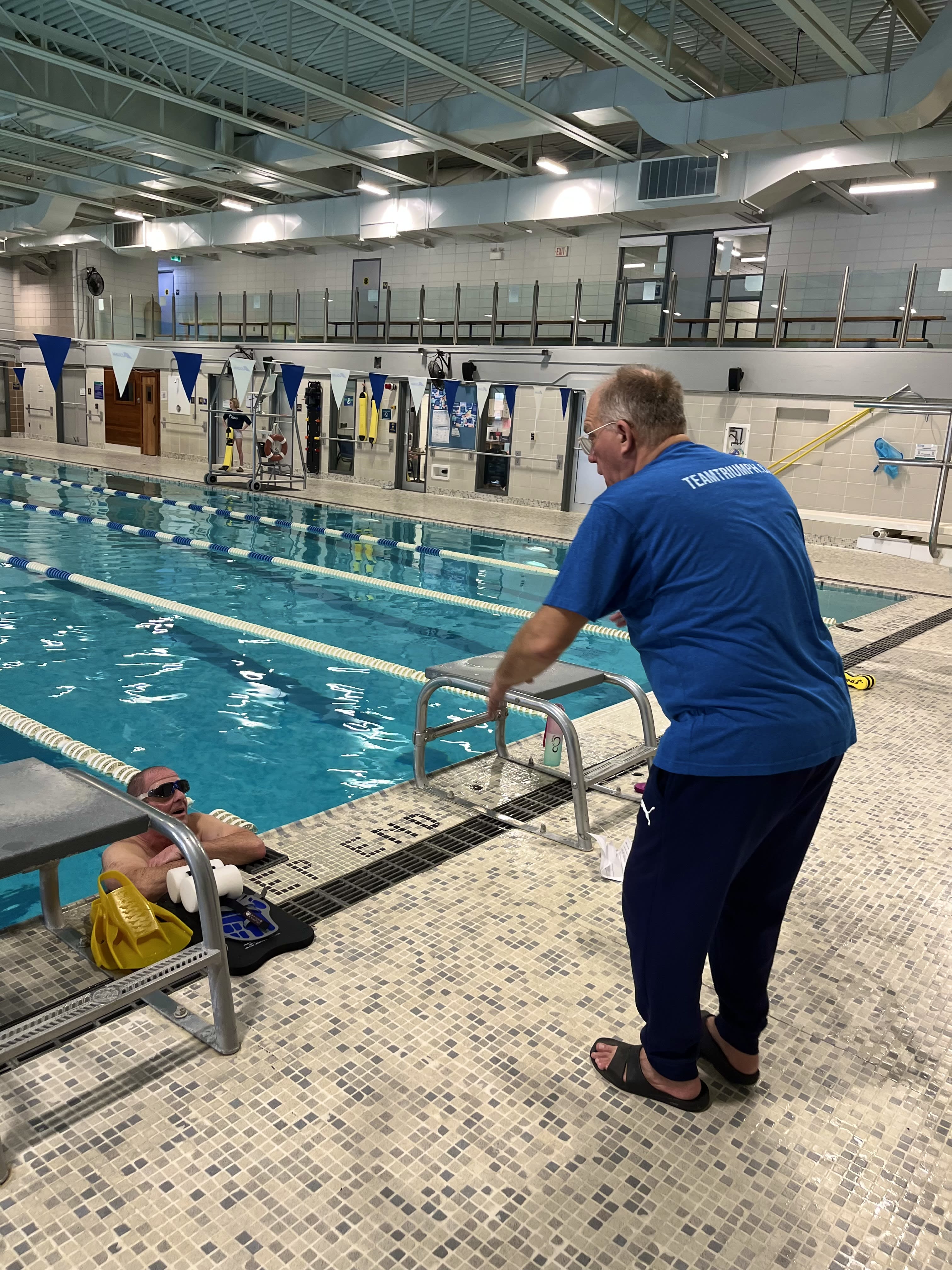
Triathlons are challenging endurance events, and racing in hot weather adds another layer of difficulty. Regardless of your race distance, proper preparation and smart strategies are essential for performing your best while staying safe. Here are some key considerations for racing a triathlon in the heat.
Proper hydration is crucial for maintaining performance and preventing heat-related illnesses.
Pre-Race Hydration: Start hydrating well before race day. Aim to drink one full bottle of low-carb electrolytes and at least 2-3 litres of water per day in the days leading up to the race. On race morning, drink a bottle of electrolytes and about 250ml of water
one the hours leading up to the start.
During the Race:
Swim: Hydration isn’t a concern during the swim, but make sure you're well-hydrated before entering the water.
Bike: Use the bike leg to hydrate and replenish electrolytes. Plan to drink at least one bottle of water or an electrolyte drink per hour.
Run: Carry a handheld water bottle or use aid stations to stay hydrated. Bring along a pouch or a tablet of electrolytes to add to your water. Drink small amounts frequently rather than large gulps to avoid stomach discomfort.
Eating the right foods at the right times helps maintain energy levels and prevent heat exhaustion.
Pre-Race: Eat a balanced meal rich in carbohydrates the night before the race. On race morning, have a carb rich, low fibre breakfast at least two hours before the start.
During the Race: Consume energy gels, bars, or other easily digestible foods during the bike and run segments to maintain energy levels. Ensure these are accompanied by water to aid digestion.
Wearing the right gear can make a significant difference in hot conditions.
Lightweight and Breathable Fabric: Opt for triathlon suits made of lightweight, moisture-wicking materials that promote airflow.
Visor or Hat: Wear a visor or hat to shield your face from the sun and help keep you cool.
Sunglasses: Protect your eyes from UV rays and reduce glare.
Sunscreen: Apply a high SPF, water-resistant sunscreen before the race and reapply as needed, especially after the swim.
Your body can adapt to heat, but it takes time. Gradually increase your exposure to hot conditions during training to build heat tolerance.
Train in the Heat: Gradually include sessions in hot weather conditions to help your body acclimatize.
Heat Training Protocols: Consider incorporating specific heat training protocols, such as hot baths or sauna sessions post-training, to enhance your body's heat adaptation.
Adjust your race strategy to account for the heat. Pushing too hard can lead to overheating and exhaustion.
Start Slow: Begin at a conservative pace to avoid overheating early in the race. Gradually build intensity as your body adjusts.
Monitor Heart Rate: Use a heart rate monitor to keep track of your exertion levels. Stay within a manageable range to prevent overexertion.
Listen to Your Body: Pay attention to signs of heat stress, such as dizziness, nausea, or excessive fatigue. If you experience these symptoms, slow down or stop and seek medical attention if necessary.
Implement strategies to keep your body temperature down during the race.
Ice and Cold Water: Utilize ice or cold water at aid stations. Pour water over your head, neck, and wrists to help cool down.
Cooling Towels: Consider using cooling towels or ice packs in transition areas to lower your body temperature before heading out on the next leg.
Recovery is crucial after racing in the heat.
Rehydrate: Drink plenty of fluids, including water and electrolyte-rich beverages, to replenish lost fluids.
Cool Down: Take a cool shower, jump back in the lake or use ice baths to bring your body temperature back to normal.
Nutrition: Eat a balanced meal rich in proteins and carbohydrates to aid muscle recovery.
Racing a triathlon in the heat presents unique challenges, but with proper preparation and smart race-day strategies, you can tackle the heat and perform your best. Remember to prioritize hydration, nutrition, appropriate gear, and heat acclimatization in your training plan. By doing so, you'll be better equipped to handle the demands of a hot-weather triathlon and cross the finish line with confidence.
Stay cool, race smart, and triumph in your triathlon journey!
Julia Aimers
CSEP Clinical Exercise Physiologist
CSEP High-Performance Specialist
Certified Triathlon, Cycling, Yoga and Swimming Coach
USA Cycling Level 2 Coach
Training Peaks Accredited Coach

I would highly recommended Eric and Team Triumph!
Ian Ross

A year ago I could only tread water and had not run since childhood. With the amazing Virtual Olympic course, support, guidance, and tips from of all the folks at Team Triumph I've ended the season with my first Olympic distance triathlon under my belt and am hooked! Really looking forward to the 2025 season and even to the hard work over the winter to prepare. Karen Houle

I wanted to let you know that the Perth triathlon was a great experience, I somehow placed third in my age group! What a supportive group of participants (including Team Triumph athletes), cheering bystanders and volunteers.
Thanks to your swim lessons, I learned the technical basics and gained confidence to get back in the pool after decades. And it was really special doing this with Ann Laidlaw, my bestie for many years. We did a couple of additional swims with Kevin and Team Triumph people, also a great way to continue learning and practicing good technical form.
I will continue with lane swimming and who knows, maybe there's another triathlon in my future!